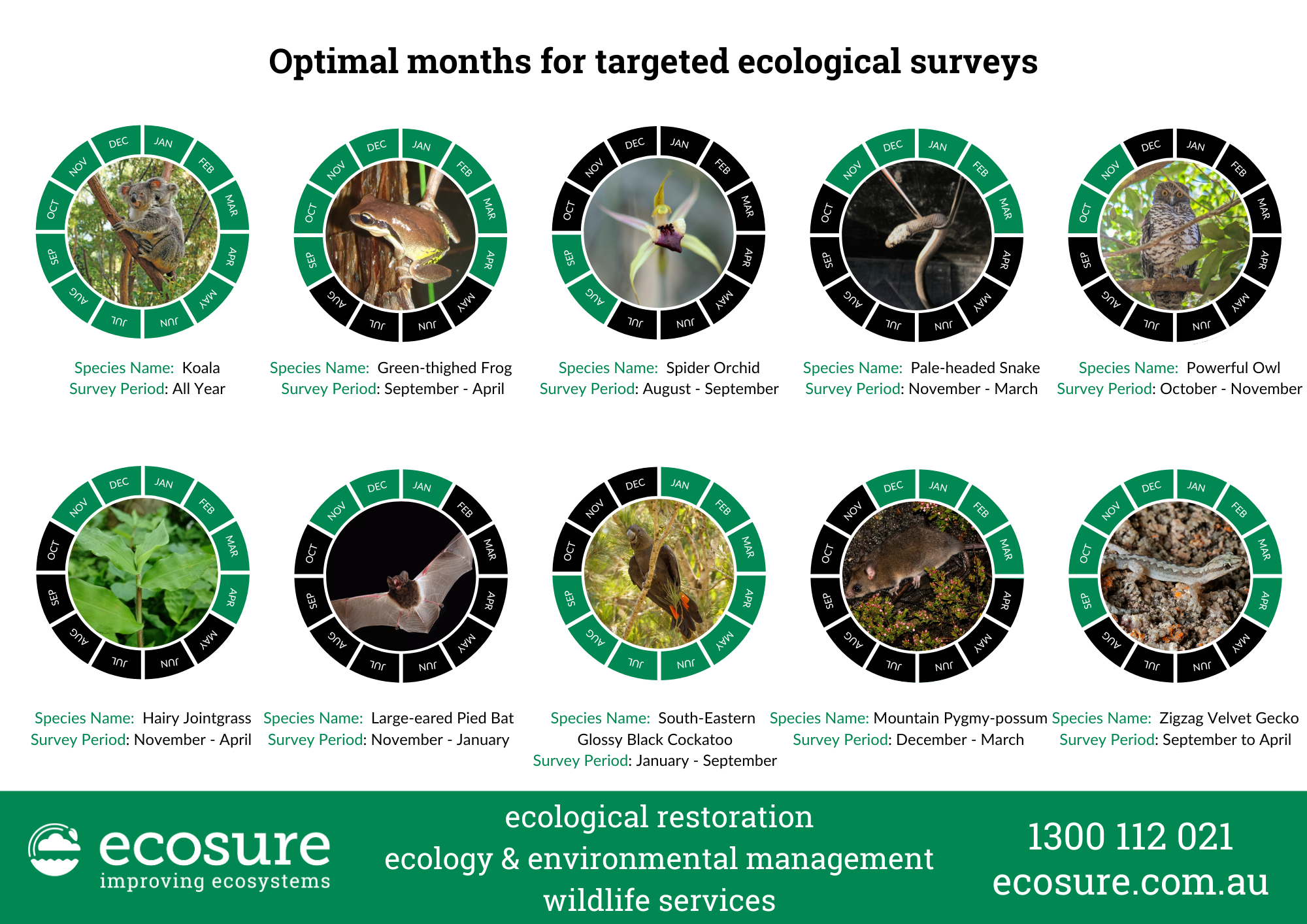Protecting Australia's Unique Flora and Fauna utilising Targeted Ecological Surveys
Australia is known for its unique range of flora and fauna species that cannot be found anywhere else in the world. However, with almost 1000 animal and plant species in New South Wales alone considered threatened, it’s important to take steps to protect them. This is where targeted ecological surveys come in. At Ecosure, we recognise the importance of identifying where threatened species occur on a site and ensure steps are implemented to protect them.
We’re currently working on several Biodiversity Development Assessment Reports (BDARs) in NSW which include these targeted threatened species surveys. Survey planning is essential for these reports, and different survey periods can impact detectability.
What is a survey period?
A survey period is the designated time of year that an ecological survey can be conducted for a specific species. For some species, surveys can be completed at any time of the year, however for others the timing is much more specific. For example, the flowering season for the Spider orchid typically occurs for only two weeks within the months of August and September. These survey periods are set to increase the chances of detecting the species in question, and to ensure that data is collected at the most informative times for that species.
What’s the importance of planning ahead for survey periods?
When conducting targeted ecological surveys for threatened species, planning ahead is crucial. This helps to ensure that the survey is carried out during the optimal survey period for the species we’re looking for. In addition, where surveys for multiple species are required Planning ahead means that we can consolidate survey effort throughout the year, to capture data during different optimal survey periods in a time- and cost- effective manner for our clients.
How are survey periods determined?
In NSW, recommended survey periods are determined by the State and are based on a range of factors. These include seasonal changes, breeding/flowering cycles, and the behaviour and habitat of the species. These factors will influence timing and detection probability, and therefore dictate the survey period.
Why do different survey periods affect detectability?
Survey periods have a direct impact on detectability. Simply put, if a survey is not carried out during the optimal survey period, there is very little chance of detecting the species in question, even if it does occur on the site. For this reason, it’s crucial that survey periods are well planned and conducted at the most effective times of year.

What’s the importance of targeted ecological surveys?
Targeted ecological surveys are an important step in protecting our unique flora and fauna species. They help to identify areas where threatened species occur, and to determine the best way to protect them. By carefully planning survey periods and conducting targeted surveys, we can gather the data we need to make informed conservation and management decisions. With respect to BDARs, targeted surveys may also determine that a threatened species is likely absent from the site and remove potential offset obligations (and costs) that may otherwise be required under the NSW Biodiversity Offset Scheme.
Australia’s unique range of flora and fauna species is a national treasure that must be protected. Targeted ecological surveys are an essential step in the process to preserve these threatened species.
By planning ahead we can ensure surveys are programmed pragmatically (i.e. survey dates are selected to target multiple species of interest) and that costly delays are avoided if short survey periods are missed. This data can then be used to make informed conservation and management decisions, ensuring that our unique species are protected for future generations to enjoy.
To find out more about the threatened species that may occur on your site, or require a BDAR to support your development application, contact us for some initial advice on from our ecologists.


